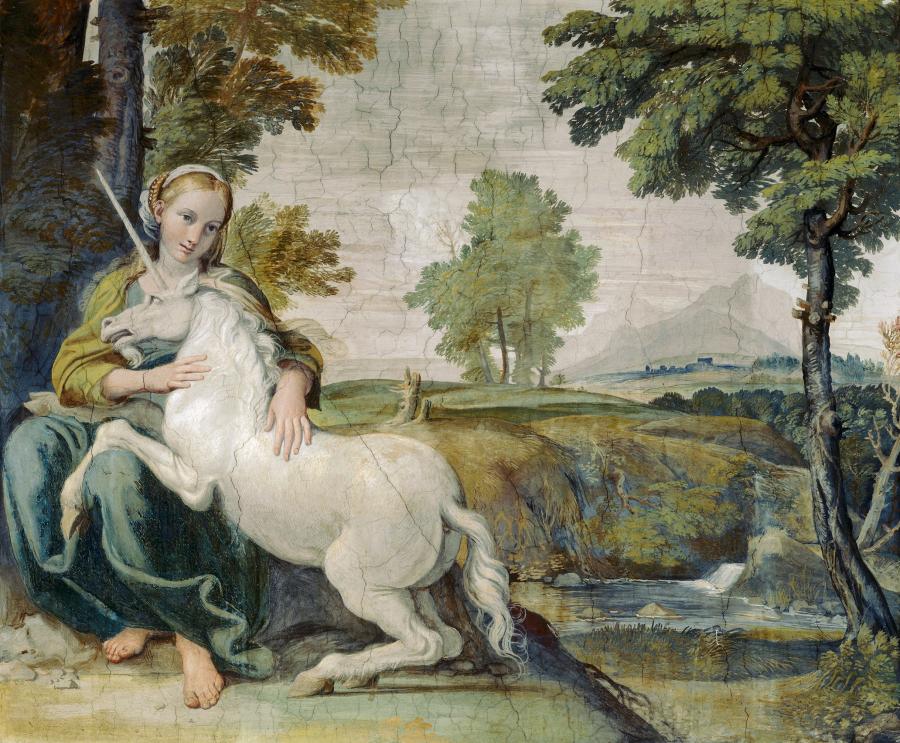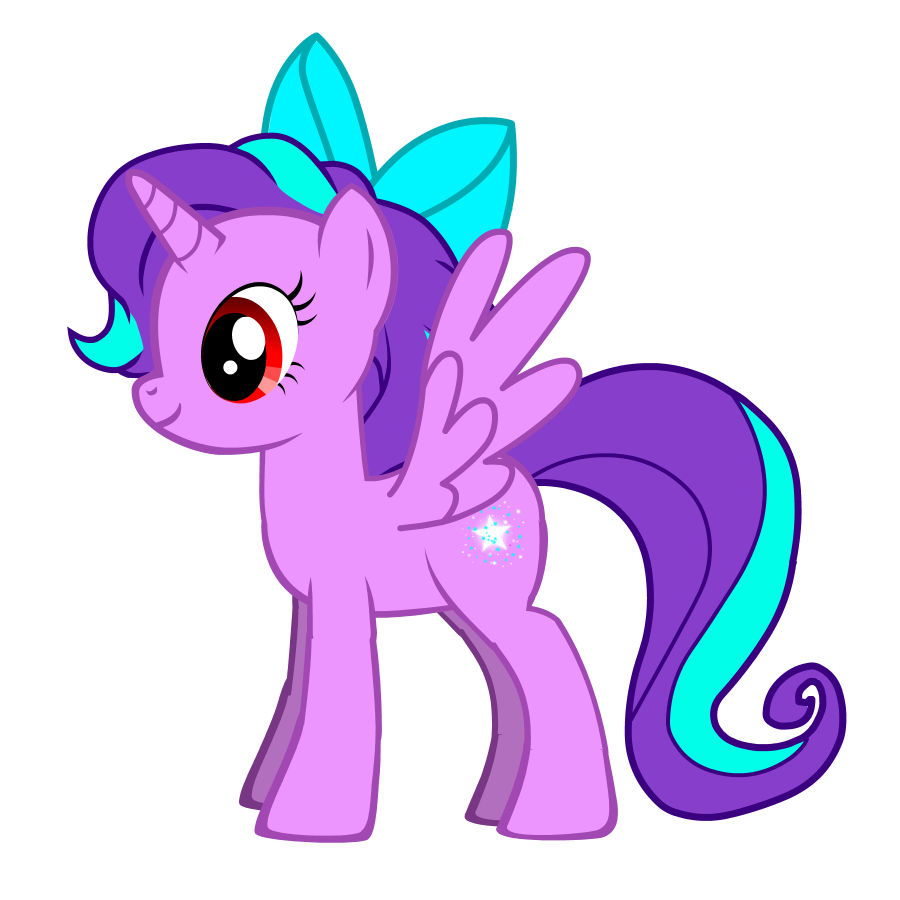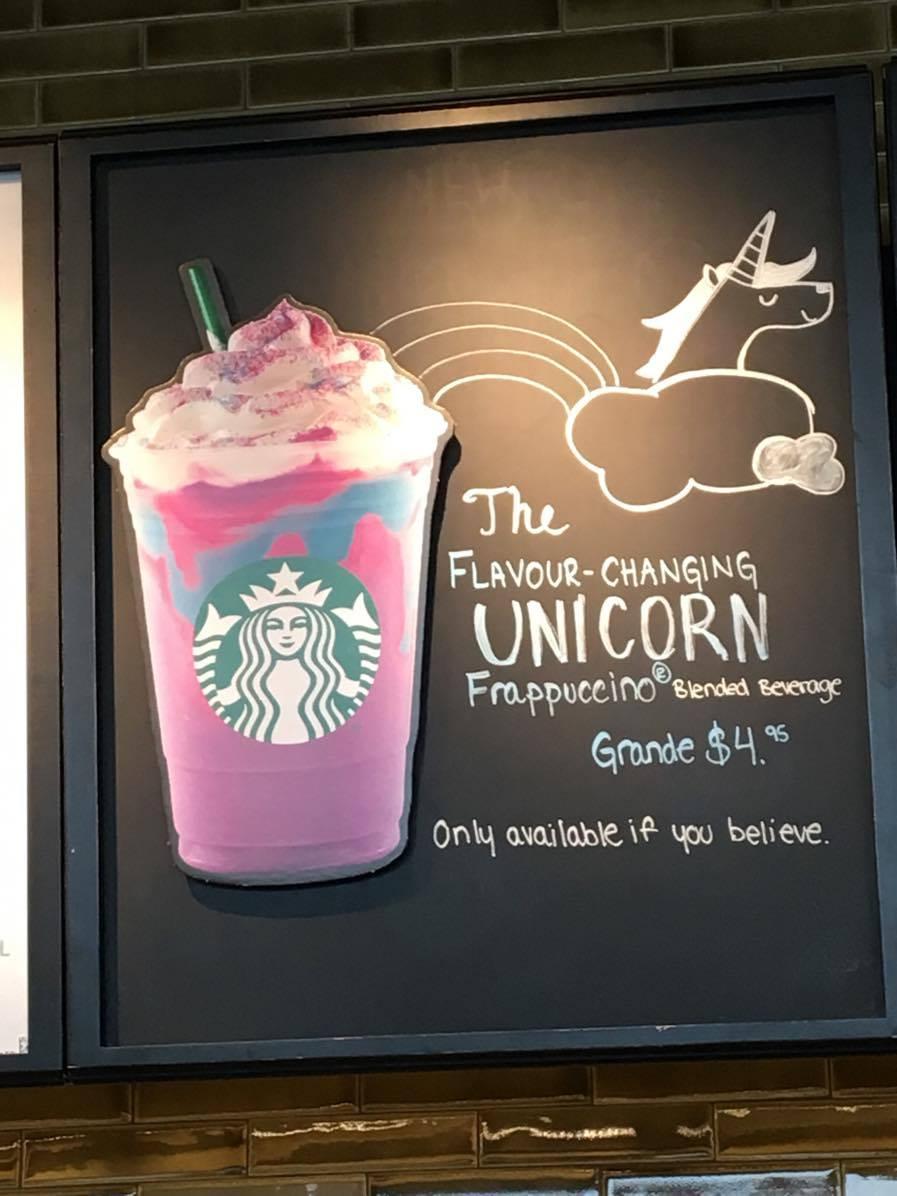
The transformation of the Unicorn: What happened to the real magic?
In this article, I will discuss the ongoing transformation of the unicorn. This mythical creature has made a sudden appearance on many online platforms, in movies and even in stores. However, these appearances don't feature the classical shape of the unicorn, namely that of a strong spiritual and mythical creature, but have given it a whole new look: that of a fluffy, squeezable, animal with lots of glitter and colors. Despite the fact that no one is sure of their existence, the unicorn has a long history. It's known from an old mythical story that is passed on from generation to generation. Although the history of the unicorn is hard to trace, many researchers wrote about this mythical creature. To be able to understand the transformation the ‘new’ unicorn has gone through, we must first get to know a few historical facts that outline an idea of how globalization transformed the unicorn into a myth.
A short history of the Unicorn
Around 2000 years ago, somewhere near the year 400 BC, Greek researchers traveled to Persia and were overwhelmed by the diversity of all the animals they saw. For the first time, European researchers noticed many wild animals, such as elephants, lions, giraffes and rhinos. Hence, the Greek researcher Ctesias wrote down a detailed description of many animals, among which the Unicorn. Ctesias is the author of the first ‘traceable’ western description of the mythical animal. He mentioned that the unicorn had a white horse-like body and a single horn of roughly 50 cm in length. The story of the unicorn was then already widely believed.
Even the famous philosopher Aristotle wrote a short description of a unicorn. He specified that the unicorn, which he called ‘he-goat’, could be divided into two sub-species: one with a cloven hoof and one with a solid hoof. Both came from the west and were hovering over the earth without touching the ground (Hunt, 2003, p.75). The way in which the unicorn appeared changed a lot throughout history. In some books, the creature is believed to have a black with red colored horn and in some stories, it was even believed that the unicorn had the ability to heal the wounded.
During the Middle Ages, people thought that the unicorn could only be caught in the presence of a young female virgin. This caused the unicorn to mistakenly appear in the Bible, as it was a well-knwon story and there was a lack of translations. This consequently caused the myth to increase in popularity, causing many people to believe that the unicorn represented Jesus. This made the majestic animal become famous all over Europe and it was notable in many medieval paintings and novels.

Even before its popularity in Europe, the history of the, or in this case, ‘a’ unicorn, can even be traced back to stories from, for instance, Chinese, Japanese and even Turkish mythology. In the eastern world, the Chinese unicorn was first mentioned in stories around 2700 BC. This unicorn is described as a creature of great power and wisdom. Chinese mythology talked about the unicorn ‘k’i-lin’, which is one of the four animals that represent a good omen. In these mythologies, the creature has the body of a deer, the tail of an ox, and the hooves of a horse; a short horn grows out of its forehead. It is believed that the Chinese philosopher Consesius was the last on earth who saw the Chinese unicorn (Borges, 1967).
The digital Unicorn
The way the unicorn has changed throughout history is notable, but the differences have happened on such a small scale and on the level of detail, which makes it seem as though they are of little importance. However, Odell Shepard concluded in his 1930 book ‘The Lore of the Unicorn’ that: “The symbol expanded into myth and this myth was debased into fable. The unicorn next became an exemplum of moral virtues, then an actual animal, then a thaumaturge, then a medicine, then an article of merchandise, then an idle dream, and, last stage of all, an object of antiquarian research.” (Shepard, 1930, p.232)
In his book, Shepard focusses on what happened to the myth of the unicorn in the past, but ignores the future. Transformations of such a historical myth are temporary; a culture will always change over time and will never be the same. Thus, such a conclusion should be able to adapt to each cultural change over time. Therefore, to expand Shepard's conclusion, I want to add a new dimension to his observation, something Odell Shepard could never have thought in 1930: digitalization.
In the television show 'My Little Pony', the strong unicorn was mixed with the soft and lovely character of Pegasus and the looks of a cute little pony. This appearance influenced thousands of American children.
The ‘digitalization’ of the unicorn started around thirty years ago. The creature began to appear in famous pop-culture movies and games, like the ‘Last Unicorn’ and ‘Lord of The Rings’. Here, they still appeared as a white magical animal, which was strong and fierce, but something began to change.
Short after the American television program ‘My Little Pony’ became popular, the appearance of the unicorn shifted. In this television show, the strong unicorn was mixed with the soft and lovely character of Pegasus and the looks of a cute little pony. Back in 1989, this appearance of the unicorn influenced thousands of American children, and later also children in Europe and Asia.
Jablonski (2014) argues that this transformation of the unicorn is due to the Americanization of the economy. “The Unicorn”, as Jablonski argues: “has been stripped of their original shape and have become Americanized.” In addition, Gregory (2014) puts it as follows: “It is customary for modern authors of children’s literature to humanize animals and make them seem tame, thus taking their animalistic beauty and wildness away.”

The Unicorn as part of your online identity
The fastest and most remarkable transformation caused by digitalization took place in the last five years. The ‘new’ form of the unicorn, based on ideas of the unicorn from ‘My Little Pony’, spread over the world through a fast-growing new medium: social media. Over time, social media became more and more popular and so did the unicorn.
According to Google Trends, the Unicorn has become a major global trend on the internet. Since 2015, the ‘new’ unicorn seemed to appear daily on diverse social media platforms, in the form of memes, inspirational quotes, and even new fashion trends. However, in March 2017, the online hype really exploded.
On Instagram alone, the hashtag #unicorn has already reached the staggering amount of 6 million posts. On Facebook and Twitter, the amount of posts containing unicorn-related contend is also huge. Hashtags like #unicorntoast and #unicornfood are also surprisingly famous now. There are even some people who spend their time making unicorn themed toasts and posting pictures of them on Instagram.
On Instagram alone, the hashtag #unicorn has already reached the amount of 6 million posts.
Young people aged between 16 and25 years old, so-called millennials, seem to be the ones who are enjoying the unicorn trend the most. Instagram is a platform where many of these people seem to spend a lot of their time, by posting and liking pictures about food, make-up, hair trends, fashion and home decor. They are not only posting new content, but simultaneously, they are also constantly being bombarded with those trends.
The unicorn trend on Instagram often contains images of unicorn-themed drinks, unicorn-hairstyles, unicorn make-up and many other products. The posts often contain captions like: ‘‘I’m not weird, I’m a unicorn!” and “Be a unicorn, be unique”. The unicorn seems to have become a symbol for feeling unique and living life to the limits; a symbol for the ones who dare to be themselves.
These statements can have a big influence on a millenial audience, as they are most likely to still be looking for role models and are keen to assert their personality. Identifying with, for instance, the ‘uniqueness’ of a unicorn can be an additive to someone’s total identity. People can belong to many different groups or, social-spheres. One can adopt such an identity for a short time and choose to leave it when they want to. This makes the group of people that identify themselves with the unicorn online a micro-hegemony.
Belonging to such a micro-hegemony seems quite easy to do, especially online, but those groups still have certain norms and rules that its members need to follow. Instead of worshipping the unicorn, or loving the myth, one can now identify with it. It’s a matter of attending to the smallest details, a matter of ‘dosing’ these details. Sometimes the details can only be seen by ‘those who know’. Identifying with such a group can be done by a very small number of recognizable items, such as clothing, jewelry, food, pictures and quotes (Blommart & Varis, 2015).
Identifying with for instance the ‘uniqueness’ of a unicorn can be an additive to someone’s total identity.
Unicorn Influencers
Micro-hegemonies often have leaders, the ones who ‘invent’ the rules. In this case, those leaders are often influencers on social media such as Instagram or Youtube. Those influencers can be people or companies who are followed by many users of such platforms. Every time they post something, a lot of those followers will see it and will often react to it.
Social media influencers often get paid to promote a certain product, company or service. Having so many followers means that a lot of companies are interested in promoting their products this way. One of these influencers is a YouTube beauty vlogger who calls herself ‘ThatsHeart’.
In one of her videos, titled “UNICORN Makeup & Brushes Tested! Is It Worth The Hype?”, she tests a few make-up products from the brand ‘Tarte’. Tarte has released a new unicorn themed make-up line and by promoting it this way, they will reach a huge amount of their target audience. In the Beauty vlog, ThatsHeart mentions that she wants to give the so-called unicorn-hype a try. Of course, she was very enthusiastic. Since this channel is followed by more than two million people, she will surely persuade some followers to buy Tarte’s new products.
Commercialization
Due to YouTube and Instagram influencers, the unicorn appeared everywhere. Not only online, but it has even become an offline trend. A product often needs a good story in order to sell; thus the consumption market seems to promote a new image of the unicorn. This tremendous growth in popularity goes hand in hand with the the way consumer behavior changed due to the influence of the internet.
One can find unicorn socks, unicorn dresses, unicorn hairclips, unicorn gloves, unicorn toilet paper, unicorn beers and even unicorn snot in stores both online and offline. It seems like everything that exists has a unicorn version of it. Because of this mass production the actual range of choice, per product, is very restricted and thus the unicorn, as a product, has become a commodity (Blommaert & Varis, 2015).
“The paradox is that we seem to believe we are all unique individuals when we all wear the same garments, eat the same food and listen to the same music.” (Blommaert & Varis, 2015, p.17)
One clear example of a company that noticed the trend shortly after it exploded online, is the American coffee company Starbucks. On April 19th, 2017, Starbucks released their famous Unicorn Frappuccino. Starbucks knew what message to spread to reach their target group, since their story was about how the consumer can ‘be’ like the unicorn, i.e. being unique, ‘be a person who wants to stand out if you buy the Unicorn Frappuccino'. And that is exactly what young millennials want to hear and want to be: unique. Because of the colorful look of the Frappuccino and Starbucks' well-known image, people started sharing pictures of their unicorn Frappuccino on Instagram, making review vlogs on YouTube and tweeting about how they loved the colors.

It is obvious that this online micro-hegemony doesn't exclusively exist online. This globalized online unicorn identity has become an accent. That means that identifying with a unicorn is often not literally dressing as one, but showing that you strive to be as unique as they are. However, there is one obvious dilemma regarding being unique. Being unique is what makes all those people all the same, as Blommaert & Varis argue more precisely: “the paradox is that we seem to believe we are all unique individuals when we all wear the same garments, eat the same food and listen to the same music.” (Blommaert & Varis, 2015, p.17).
From global to local
The unicorn trend not only seemed to explode in the western world. Since 2012, a unicorn-themed café has been in business in Bangkok. In countries like Thailand, where cute fluffy animals were already famous, the unicorn trend fitted right in. The café is stuffed with pink and blue, glittery and colorful unicorn dolls and images. This example shows that the global image of the ‘new’ unicorn is easy to adapt to a local setting, interpreted from the perspective of their own norms and rules.
On the menu, one can find unicorn cakes, unicorn sandwiches, and even unicorn hamburgers. The consumers can even choose to wear a unicorn onesie or cuddle with their unicorn toys; everything inside is a unicorn. The rules of identifying with a unicorn seem to be totally different in this case. Identifying with a unicorn in Bangkok seems to be not just about small details and make-up. It goes further than that. Here, the unicorn trend has gone offline again and they seem to take it all very seriously. In comparison to the western trend, the café in Bangkok seems to have taken it to a more extreme level. It surely goes beyond the western norms of ‘online’ identifying with the unicorn.
Another example of where the rules from the online western micro-hegemony don’t apply as strongly is the group of polygamist Unicorns from London. This group of people literally identify themselves as unicorns. The founder of the movement claims that he felt stuck in his life in the real world and realized that he felt more unicorn than human. He found more ‘unicorns’ and formed a group, so that they can dress up as unicorns together with as many glitter and color as possible. In a Vice documentary, the unicorns claim to be different; different than the ‘townies’:
“The townies are the normal people, the people that run the world. The unicorns are different” they claim. “It’s about love, spirituality, openness, and everything. Being different than the other people. Feel the inner feminine, fabulousness, and polygamy”.
Vice questions this unicorn movement: “Is this a new revolution of peace and love like the hippies in the sixties? Or is this unicorn-movement as fake as their glittery horns?”.
An artifact of globalized commodification
One can see that the 21st century unicorn is an artifact of globalized commodification. Since the unicorn has made an increasing appearance in our everyday life, it has become a part of our pop culture, consumer styles, social media trends and even of our identity. Companies and cartoon developers like My Little Pony have a big influence on the transformation of the unicorn.
The unicorn has transformed into a new social identity, which then became an offline product. This made the social media trend expand even more and this eventually made the unicorn into a commodity. Despite all of this, the unicorn is still a universal myth that expands beyond our knowledge of the history of mankind. In all that is known, or thought to be known about the unicorn, due to humans traveling, trading, telling stories and globalization, the unicorn slowly transformed from a collection of different stories into a worldwide known myth.
What makes myths so unique is that they are a product of emotion and imagination; they tell a story of hope and visualize the ability of humans to dream.
References
Blommaert, J. & Varis, P. (2015). Enougness, accent and light communities: Essays on contemporary identities. Tilburg Papers in Culture Studies nr. 139.
Borges, J. L. (1967). The book of imaginary beings. Buenos Aires: Penguin Books
Gregory, M. (2014). Animals in Children’s Lit. Lecture at University of Toledo. Field House, Toledo.
Hunt, D. (2003). The association of the lady and the unicorn, and the hunting mythology of the Caucasus. Folklore, edition 114, p.75-90.
Shepard, O. (1930). The Lore Of The Unicorn. London: George Allen & Unwin.
Vice. (n.d.). Inside London's Hedonistic, Polyamorous Unicorn Movement. Retrieved on 15 October 2017.